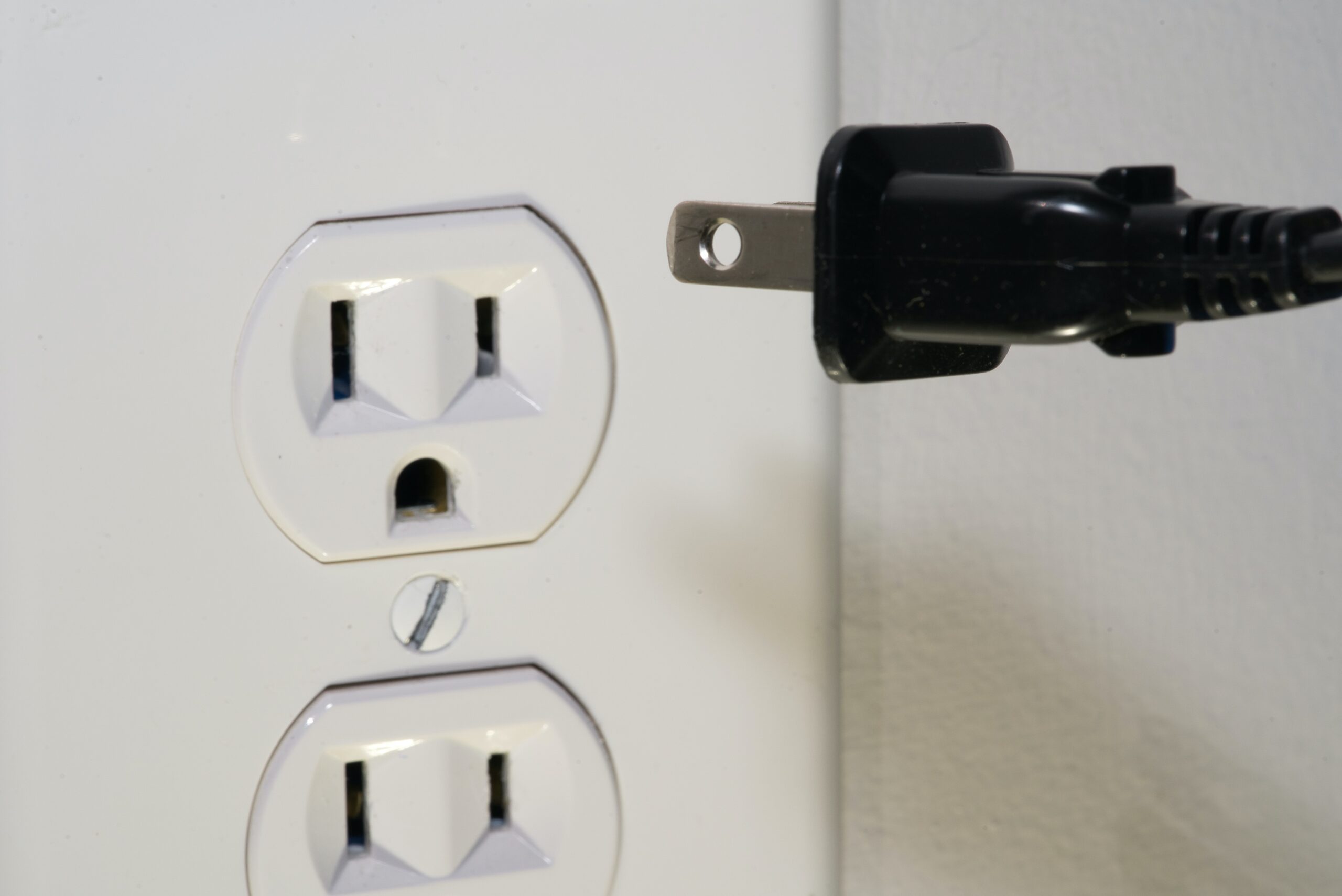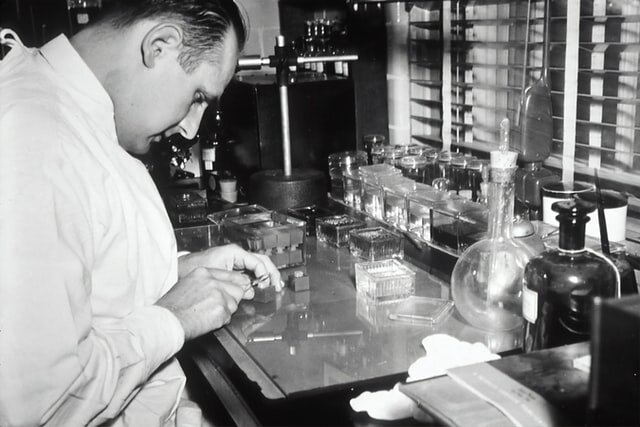It’s the week of the launch of my new podcast, The Breakdown™ with Chris Clearfield, and I find myself feeling anxious about it.
For me, that anxiety shows up in a couple of ways.
It shows up when I wake up in the middle of the night and can’t go back to sleep.
It shows up in my body—back pain, knee pain. Everything feels all akimbo. (This is a good tell for me. I had back pain when I was younger that only went away when I realized it was a sign that I had emotions I could not yet feel or voice.)
I’ve been trying to figure out why, and where the anxiety comes from. After all, it’s just a podcast!
But there are clues.
When I notice my anxiety, it gets stronger. It makes me want to move away from the process. To delay the launch. To postpone it. To say that we are too busy. To, as I say with my partner, “drop the rope,” like walking away from a game of tug-of-war when it gets too hard.
So, where does the anxiety come from?
What I’m doing here in my work and my life is, as a well-known journalist I know put it, ploughing new ground.
It’s not alien ground—I’m not plowing the Moon or Mars. But it’s new ground for me.
There are hundreds of thousands of podcasts out there. Sure. Absolutely.
But I’ve never launched a podcast before.
I’m anxious because I’m worried that I will fail, that I will look foolish. That I will be rejected, that what I do won’t be “good enough.”
I’ve had the good fortune of having a tremendous amount of success in my life. A lot of that stems from privilege—being born a white man at this time in this place. Having educated parents. Social capital.
A lot of my success has to do with luck and happenstance. A neighborhood friend who went away to boarding school (the North Carolina School of Science and Math) and made it easier for me to walk that path—and move to environments (first NCSSM, then Harvard) that allowed me to flourish.
Some of my success comes from the way my brain works to solve crazy complex problems. By bringing focus. By seeing how the parts come together to form a whole and by seeing the relationships between things.
A lot of that goes back to my biology and how I learned to operate growing up—understanding relationships between people helped me stay safe in a world where I didn’t always feel like I fit in.
I’ve gotten better with practice. When I studied physics, for example, I was never very good at solving problems by grinding out equations. But I delighted in moving between the details and the big picture.
My journey of personal growth started in my thirties when I became a parent. As my son grew, I was able to understand how much I operated in a fixed mindset, one in which I’m defined by my achievements and wary of making mistakes. Now I try to operate in a growth mindset, one in which I acknowledge that the primary pursuit of life is learning. (Carol Dweck’s book changed my life—thank you, Carol!)
This wasn’t just a shift; it was the start of a new journey for me. I’m slowly dropping the stance of self-judgment to one of growth.
It’s fun to compare the podcast with Meltdown, about which I never felt much anxiety. I’m immensely proud of the work that András and I did in that book. The writing is tight, the stories are fun, and we take a series of extremely complex concepts and break them down in a way that’s accessible.
But writing the book never really felt like a risk. The thing about writing a book is you have a lot of people looking at it. Our editor and team at Penguin Press were fantastic. Our agents were great. We received excellent input from academics and some talented folks like the organizational psychologist Adam Grant.
We had a lot of support and a lot of chances to get it right. We also had skills, dedication, and 15 months to research, interview, write, and edit.
I had an amazing coauthor who I loved working with. We improved each other’s writing throughout the whole process.
But you know what did feel like a risk? Promoting the book.
Sure, I was happy to show up and give talks; that’s just part of the process. But the act of putting work out there to try to get attention for the ideas in Meltdown—I just didn’t do that. For nearly two years!
Instead of marketing the book, I waited for people to discover it (fortunately, some did and it resonated with them—something that’s led to interesting professional opportunities). I didn’t write, I didn’t blog, I didn’t try to connect with an audience. That’s what felt scary to me.
What if no one reads my stuff? What if I promote the book and no one likes it?
Walking my path—journaling, therapy, meditation, coaching—helped me understand that fear was limiting me. Since then, I’ve been working with that fear. I try to treat it like a friend who is just trying to keep me safe.
I’ve also put together a great team that helps me with the work. It’s hard enough to overcome fear, and even harder when there are lots of other barriers along the road (like having to format emails and set up a mailing list).
That’s the journey I’ve been on these past six months. (Thanks for being here with me!)
So, back to the podcast: I was talking with my partner about my anxiety and it struck me that one of the things going on here is that I know this podcast isn’t great yet.
I’m producing content that doesn’t live up to my own standards. It’s in a medium I haven’t worked in before with an audience that I’m still defining.
When I had that realization, everything clicked into place. My fear of not being good enough at this (and, of course, some fear of not being “good enough” to my core) collided with my fear of not being relevant, not being out there in the world. I was holding myself back from doing work that mattered to me.
At that moment, I was able to take some solace from the wisdom of Ira Glass.
If you’re not familiar with his work, Glass is one of the most preëminent storytellers in the world. He practically invented the story-based radio genre.
Beyond the wildly successful show This American Life, Glass has produced film and TV projects, the popular podcast series Serial. He has also paved the way for amazing creatives like Alex Blumberg, the creator of the podcast StartUp and the CEO of Gimlet Media.
Glass is a master storyteller.
Ira Glass has this amazing piece of tape where he talks about the creative process. As a creator, he says, you want to create because you love the medium. And that love of the medium means that you have really good taste.
But, at the beginning of your journey, there’s what Ira Glass calls a gap:
For the first couple of years that you’re making stuff, what you’re making isn’t so good. It’s not that great… it’s trying to be good, it has ambition to be good. But it’s not quite that good….
But your taste, the thing that got you into the game, your taste is still killer. Your taste is good enough that you can tell that what you’re making is kind of a disappointment to you. You can tell that it’s still sort of crappy.
I want to make a podcast because I love podcasts. I love the deep connection that audio allows. I love the medium for what I learn from it and the feelings it evokes in me.
And that’s where my anxiety comes from. I know what great work sounds like. I have a belief, an old story, that I should be good at stuff. And I know that I’m not yet very good at this yet.
At this moment, I choose to fully inhabit that gap. Not only does my work not measure up to my own standards, I’m releasing it into the world for others to possibly agree with that assessment.
That’s not intended to be self-critical or self-effacing. I’m actually doing work that I think is kind of crappy… or, at least, not great.
But the best thing I can do right now is to release mediocre work.
As Ira Glass puts it, “The most important possible thing you could do is do a lot of work. Do a huge volume of work.”
I know that I’m going to be much better at this in three months. I’ll be even better in six months, nine months. At some point, I’ll recognize that I’ve started doing really good work, maybe even the occasional piece of great work.
Until then, I’ll keep growing, keep trying to do better.
Great work is a journey, not a destination.
These are the kind of conversations that I’m going to be having on my podcast. Conversations about what’s hard about growth. Building a business. Walking your own path as an entrepreneur, as a creative, as a leader trying to break new ground.
Once I realized that my anxiety sprang from feeling like I had to produce great work and knowing that I wasn’t, I was able to let go of the story that my work “should” be anything at all.
I’m doing a good enough job.
I’m excited to get better at podcasting as a medium. And I’m really excited to use my skills to advance the art, in whatever small way I can, of solving complex problems in a way that’s relational and in touch with our humanity.
So, without further ado, I’m excited to welcome you to my podcast. It’s no Serial (yet), but we’ve captured some great conversations with people that I truly respect. We’re talking about stuff that matters in this unique moment and I’m excited to share these with you. For me, it’s also a great exercise in showing my vulnerability and learning by doing. I’m looking forward to learning with you by my side.
Thank you for being part of this journey with me.
Let me know what you think. I look forward to hearing from you.
Listen to The Breakdown™ with Chris Clearfield here:
Subscribe here to get these articles in your inbox (and to get a free sample from my book, Meltdown).






